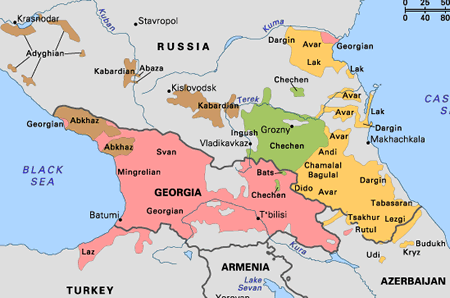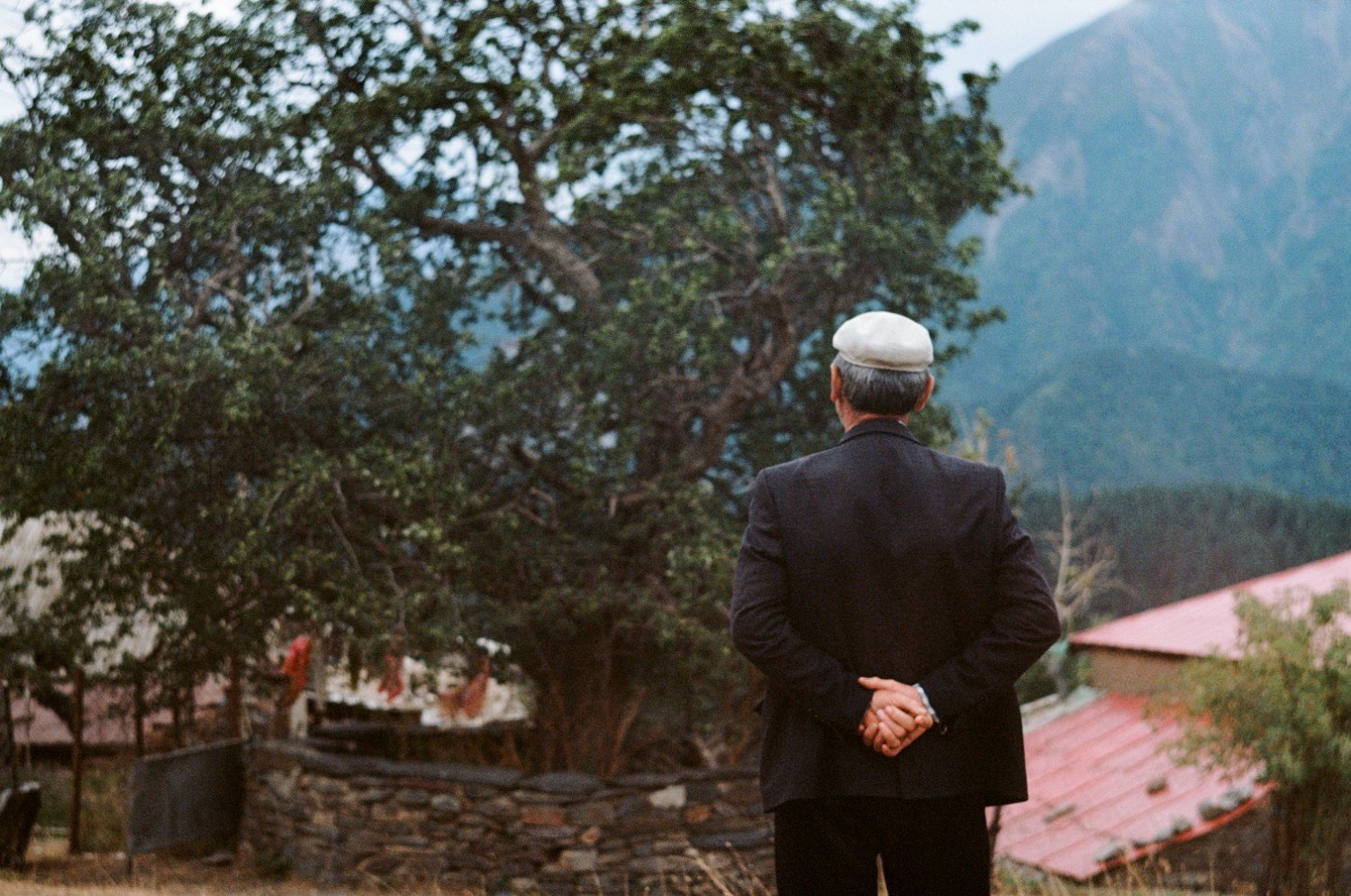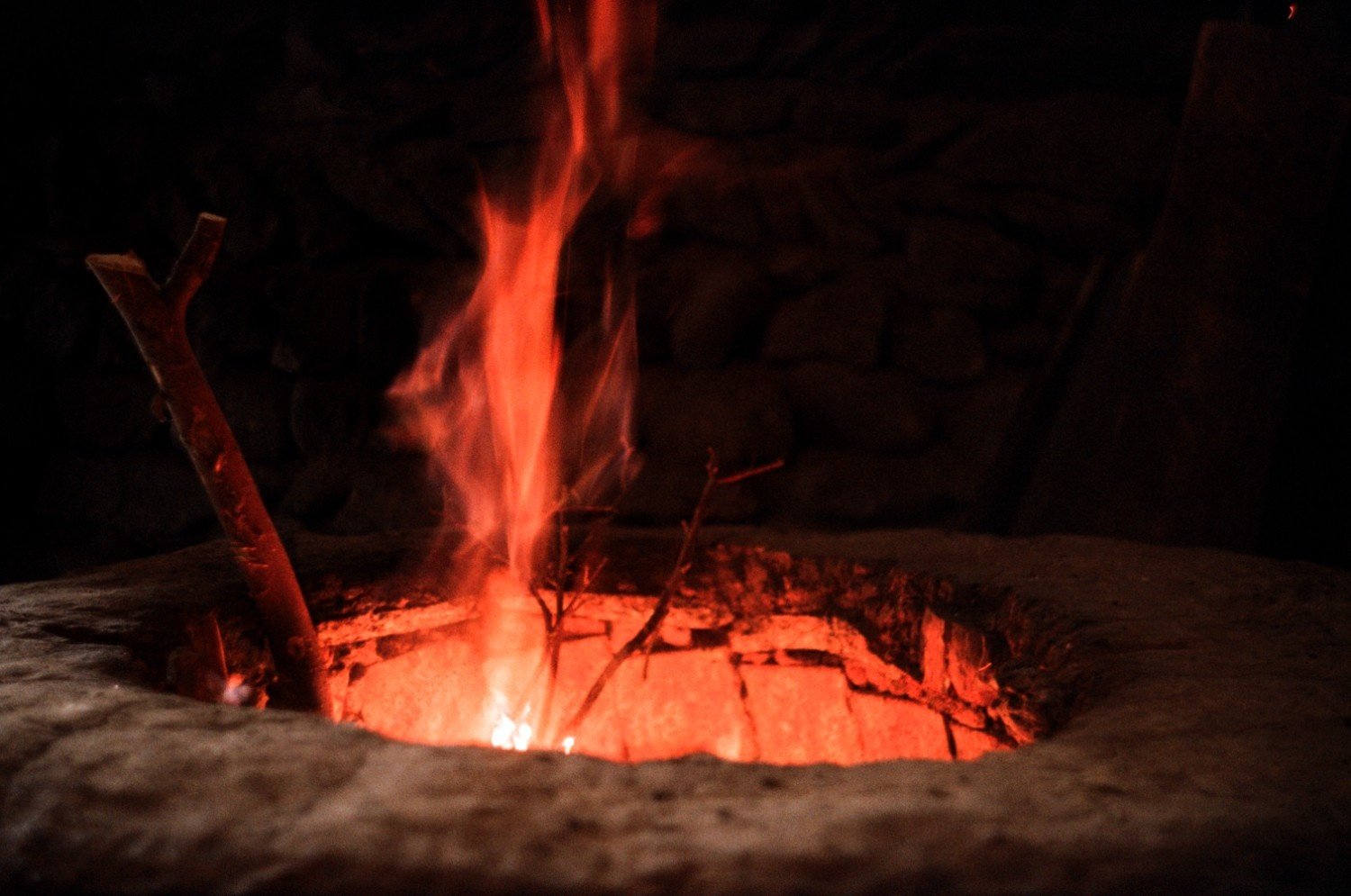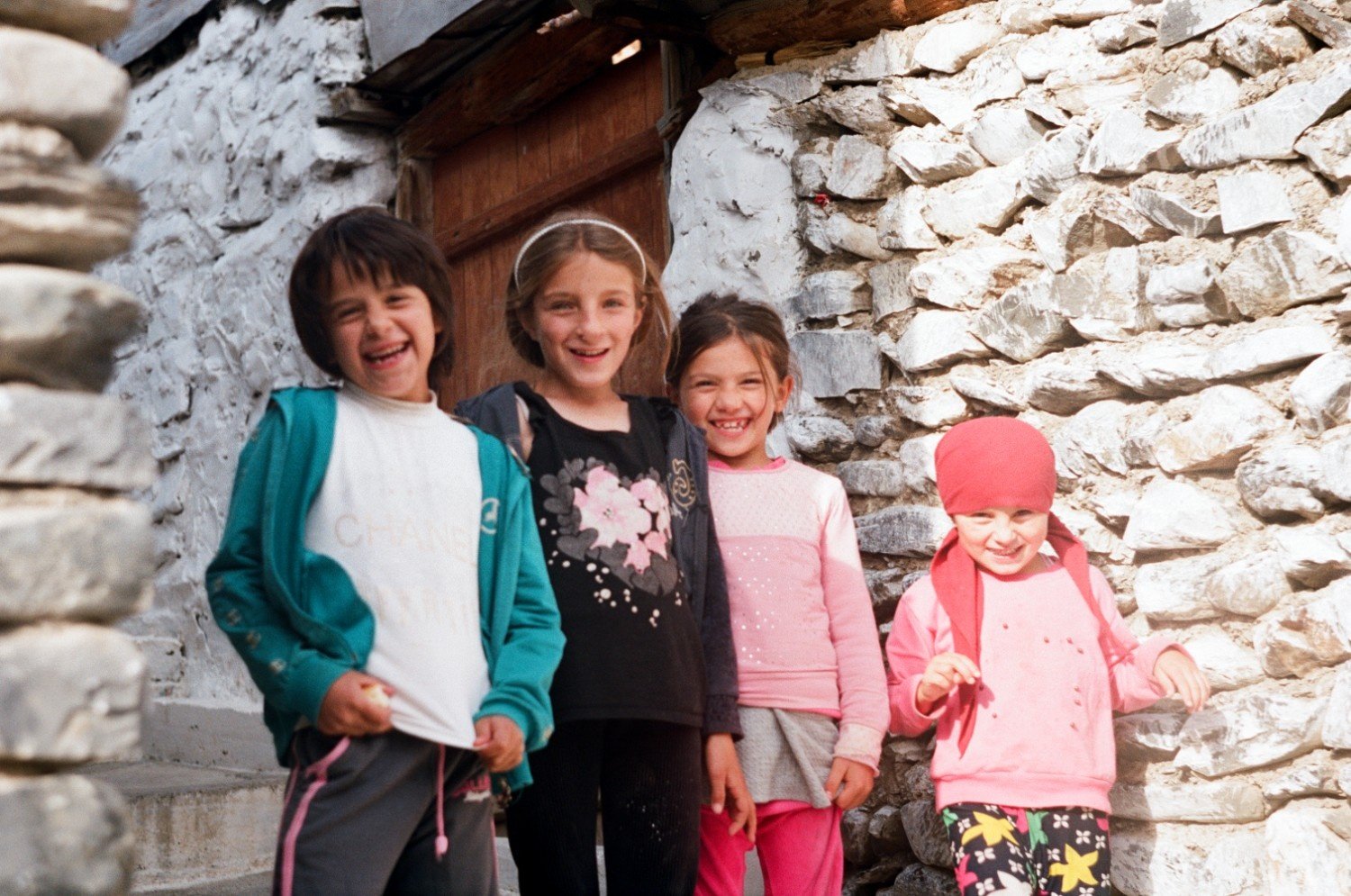
Tsakhur: Spiritual Cradle of Islam in Caucasus
“There is nothing worse than ignorance, in whatever form it may be!” – these are the welcoming words over the entrance to the Nizamiya Madrasah, which was founded in 1075 as the first University in Caucasus, in a remote village of the Greater Caucasus mountain range – Tsakhur.
The Tsakhurs (self-designated as “Yiqby”) are the autochthonous people of the Caucasus residing, nowadays, predominantly in the border between the Republic of Dagestan (Russian Federation) and Azerbaijan with the center in the village of Tsakhur, which is about 3000 years old.

Caucasian Language Families (https://www.mustgo.com/worldlanguages/caucasian-language-families/)
The Tsakhurs speak the Tsakhur language (“TsIaIkhna miz”), which belongs to the Lezghin family of the Nakh-Dagestan group of North Caucasian languages and is nowadays included into the UNESCO Atlas of the World’s Languages in danger.[i]
Interestingly enough, is the fact that in the 1st century B.C. the ancestors of the Tsakhurs with the allied Caucasian tribes, established the Kingdom of Caucasian Albania. After its disintegration in the 5th Century into several feudal possessions, the Tsakhurs created their kingdom of Lakz, which later became known as the Tsakhur Sultanate.[ii]
Over the course of history, Tsakhurs changed several religions. During the formation of the kingdom of Caucasian Albania the Tsakhurs were pagans, in the IV century they adopted Christianity, as evidenced by the early Christian architectural monuments in the Tsakhur villages of Qum, Mamrukh, Lekit. With the arrival of the Arabs in the Caucasus in the 7th Century, the Tsakhurs converted to Islam peacefully, unlike many neighbouring peoples who for a long time resisted the Arabs and the spread of Islam.

An old Tsakhur man in front of the Ziyarat, Tsakhur valley, 2019
Photo credit: Sofia Melikova
Moreover, Tsakhur, being the capital of the Lakz kingdom and having converted to Islam, becomes the main center of Islamic education in the North Caucasus, which is proved by the above-mentioned establishment of the Nizamiya Madrasah. Tsakhurs, who studied Islam in Baghdad and Damascus, became the first teachers at the Madrasah. Among the main subjects taught at Nizamiya there were: Arabic language, Islamic law, Arabic literature, physics, history, mathematics, astronomy, and biology.[iii]
In the 13th Century, the Arab scholar Zakariya al-Qazvini, who visited Tsakhur, wrote : “Tsakhur is a large city, densely-populated. It is the main city of the Lakz country, and has 12,000 households. There is a madrasah, founded by his vizier Nizam-al-Mulk, and with him there is a teacher and fakikhs.
The Tsakhurs translated al-Muzani’s Compendium of legal opinions into the Tsakhur language and the book of Imam Muhammad al-Shafii, who was an Arab Muslim theologian, sholar and writer, as well as one of the four great Sunni Imams who contributed to the foundation of the principles of Islamic jurisprudence (Uṣūl al-fiqh). They have no leader, but they have a preacher, who prays with them according to the teachings of Imam al-Shafii”.[iv]

Tsakhur artefacts found in the region and collected by locals, 2019
Photo credit: Sofia Melikova
In the 19th century, during the expansion of the Russian Empire in the Caucasus, the Tsakhurs put up heroic resistance, fighting in the period from 1803 to 1859. During this time, the Tsakhur villages were destroyed at least five times, and each time they were rebuilt by the Tsakhurs again, but in 1852, all villages were razed to the ground by artillery fire, and the entire population was deported. Tsakhur Madrasah and ancient mosques were destroyed by Russian troops, many books were burned during the fires. Only 10 years later, Tsakhur residents were able to return to their homeland and restore their villages and mosques.[v]

Tsakhur traditional furnace “tandoor”, 2019[vi]
Photo credit: Sofia Melikova
Overall, nowadays about 30 thousand Tsakhurs living in the Russian Federation and the Republic of Azerbaijan are Sunni Muslims of the Shafi’i madhhab, most of whom consider themselves to belong to the Sufi order of Naqshkabandiyah. [vii]

Tsakhur children, Jinykh village, 2019
Photo credit: Sofia Melikova
In addition, a lot of efforts are being made by the Spiritual Administration of Muslims of Dagestan as well as local NGOs in terms of revival of the Tsakhur Nizamiya Madrasah as an Islamic university, as well as other worshiping places and cultural sites. Thus, in the 21st century, we are witnessing an Islamic revival in the Caucasus.
[i] UNESCO, Atlas of the world’s languages in danger, https://unesdoc.unesco.org/ark:/48223/pf0000187026
[ii] Letifova, E., Northwestern Azerbaijan: Ilisu Sultanate, Baku, 1999.
[iii] Kurbanov, K., Essays on the Tsakhur History, 1980.
[iv] Zakarija Ben Mohammad. Ben Mahmud el-Cazwini’s Kosmographie.
Hrsg. von F. Wüstenfeld. – Göttingen, 1848, Bd. 1.
[v] Musaev, G., Tsakhur historical and ethnographic research of the 18th-19th centuries, Makhachkala, 2009.
[vi] According to some researchers, including E. Latifova the toponym Tsakhur is formed from two components, namely: “Tsa” – fire, hearth (in the language of Tsakhurs and some neighboring ethnic groups) and “Khur” – village (in Lezgi), see more: Letifova, E., Caucasian Albania. The territory and population of the Ilisu Sultanate, 2010.
[vi] Naqshbandiyah is a major Sunni order of Sufism founded in the XIVth century by Baha-ud-Din Naqshband Bukhari. Naqshbandi followers trace their lineage to the Islamic prophet Muhammad and the first Caliph of Sunni Islam Abu Bakr. Nowadays it is spread in the Northern Caucasus, Central Asia, India and in the Balkans.
(The views expressed in this article are the author’s own. Content can be used with due credit to the author and to ‘Zariya: Women’s Alliance for Dignity and Equality)

Elman Novruzov – is an ethnic Tsakhur, researcher, historian and minority rights activist based in Russia. Holds MA in Law and Civil Service of the Russian Presidential Academy of National Economy and Public Administration and PhD in History of the Lobachevsky State National Research University of Nizhny Novgorod.
Sofia Melikova – is researcher, documentary photojournalist, arts activist, member of the Tsakhur National Cultural Autonomy and former OHCHR Minority Fellow. She holds MA in European Studies, University of Flensburg, and Diploma in International Relations,Russian Presidential Academy of National Economy and Public Administration.



